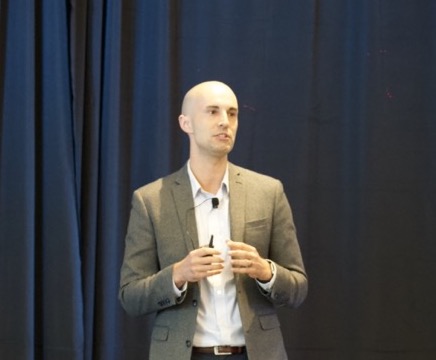The Future of Work Is Here: New Workspaces and New Workflows


2023 marks important milestones in technology and workplace trends. LinkedIn is 20 years old, Google is now 25 years old, as is the iMac computer, which revolutionized the design of desktop computers and modern workstations.
These anniversaries are important in understanding workplace trends, as they go hand in hand with technology developments. During a recent thought leadership spotlight at From Day One’s Boston conference, Matthew Confer, VP of Strategy at Abilitie, listed quiet hiring, AI, loud quitting, hybrid work, remote employees, non linear workdays, and boomerang employees as the trending topics in workplace trends, as found on TikTok.
And, perhaps counter to the trends of asynchronicity and location flexibility as observed in the last three years, companies are mandating returns to office.
“Zoom brought people back to the office this year and it was not lost on the media,” said Confer. As of 2023 only 30% of Americans work from home, the National Bureau of Economics Research reports. Full-time work from home now only applies to 12% of the workforce. 58.7% of Americans work full-time on site, and that is reflected in the search trends: lunch options, backpacks, and how to make a presentation.
There’s less flexibility than in 2020, but there’s still flexibility within reestablished constraints. Companies are offering “work from anywhere” weeks, a set amount of time when you can work from anywhere, without it compromising your PTO. “This was rolled out alongside a more stringent requirement to be in the office,” said Confer.

But while workers might be in the office physically, more and more of their tasks are taking place virtually, especially with developments in AI. ChatGPT surpassed 100 million users in two months. To compare, the telephone only reached this number of users 90 years after its introduction.
At work, ChatGPT helps with tasks such as writing and refining an email, design ideas, searching for information and analyzing data, and drafting blogs. The language model is now sophisticated enough that it scored in the 97th to 99th percentile of the Torrance Test of Creative Thinking.
In a survey of 31,000 people, 49% are worried about AI. Still, of those surveyed, 70% would still use it as a tool. It’s not all dire, it’s a matter of using it sensibly. “The buzzword of next year will be responsible AI,” says Confer.
When it comes to delegating, AI could help tremendously in meetings. Meetings can spend too much of a company’s time (and dollars). “Over half of remote workers say that the vast majority of meetings just could have been an email,” says Confer.
Shopify decided to cancel meetings with more than three people that were set up as recurring, requiring organizers to manually re-book these time slots if they were needed. They added a widget that would show an estimate of how many company dollars the meeting would cost. Organizations should think of how to implement AI in their stead if meetings are still important to the company. The technology could dial in, give you a summary of the meeting, and inform you of your priorities.
“Technology is amazing, it moves unbelievably fast,” says Confer. “People are creative, and there's absolutely no idea and nobody has a prediction about what the ideal home office will look like in the future.”
Editor’s note: From Day One thanks our partner, Abilitie, for sponsoring this thought leadership spotlight.
Angelica Frey is a writer and a translator based in Boston and Milan.
The From Day One Newsletter is a monthly roundup of articles, features, and editorials on innovative ways for companies to forge stronger relationships with their employees, customers, and communities.